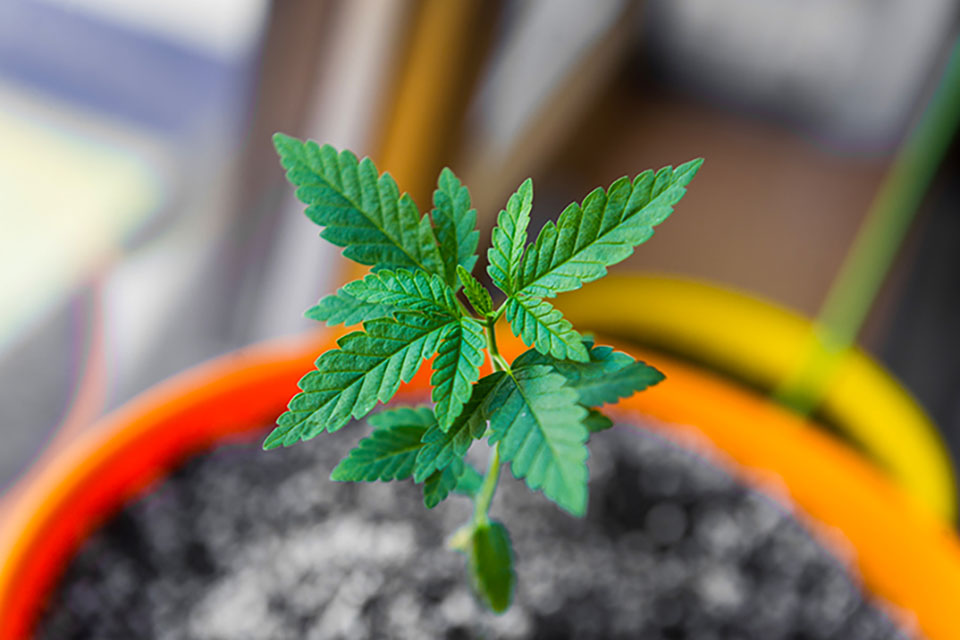
So, you’ve finally decided to experiment with cannabis cultivation. That’s a great decision! While most new growers are excited to start, it’s easy to become overwhelmed with information. Don’t worry, though—in the end, it’s not much harder to grow marijuana than it is to grow any other kind of plant.
Growing marijuana, whether you’re doing it inside or outside, isn’t difficult, but there are a few things you’ll need to learn to ensure a successful harvest. Once you’ve mastered the basics, you’ll learn how to quickly tell what the plants need and how to give it to them. In this comprehensive guide, we’ll cover cannabis plants’ basic needs and show you how to care for them throughout their lives.
What Does a Cannabis Plant Need?
To grow a healthy and abundant crop, certain requirements must be met. Here’s what a marijuana plant needs to thrive.
- The right location. As a grower this will be one of your most important decisions. Will you grow inside, outside, or in a greenhouse? Indoor growers can manipulate the lighting schedule and other conditions, and in some cases, they can enjoy harvests twice per year. However, indoor cultivation requires expensive equipment and increased energy consumption.
- A stable outdoor environment. Outdoor cannabis cultivation is dependent on the elements, which is an advantage for those living in warm climates. Aside from regular nourishment and watering, it’s all in Nature’s hands. Crops can be affected by pests and poor weather conditions, and that’s the only major downside to outdoor growing. Using a greenhouse offers the best of both worlds; it protects the crops but still utilizes outdoor temperatures and lighting cycles.
- A good growth medium. Selecting a growing medium is another important step. If you’re growing in soil, choose a high-quality product with good drainage and high nutrient content. However, if you decide to go soilless, remember that pH levels aren’t as forgiving, and your results will be dependent on the nutrients the plants receive.
- A stable temperature. Cannabis plants are adaptable and resilient, but they should do more than survive—they should thrive. If the plants are exposed to high or low temperatures, their growth may be stunted, and their chemical structure can be affected. The best temperature range for cannabis plants is 75 to 86°F; anything above or below that may affect cannabinoid levels.
- Lighting at specific times. Lighting is crucial to the healthy growth of cannabis plants. Whether you’re using direct sunlight or indoor grow lights, these plants need light and darkness at specific times that depend on their growth phase.
Now that we’ve discussed cannabis plants’ basic needs, let’s get into a bit more detail about requirements for outdoor and indoor crops.
Giving Outdoor Plants Enough Light
When growing marijuana outdoors, lighting schedules are set by Nature. To maximize natural light, position the plants (if they’re potted). For optimal growth outdoors, plants need at least eight hours of sunlight, ideally between the hours of 10 am to 4 pm. As seasons change, the plants will get less light until they enter the flowering phase.
Lighting for Indoor Plants
With an indoor cannabis crop, you’ll have to be more diligent. During germination and vegetation, ensure that the plants get 16 to 24 hours of light and zero to eight hours of light per day. As the flowering phase approaches, you’ll need to gradually decrease the time the plants spend under the lights.
When your plants have started to flower, they’ll need about 12 hours of light and 12 hours of darkness. However, precise timing may vary by strain—some indica-dominant strains need roughly eight hours of darkness during flowering, while a few sativas need more than 12 hours.


Give Them Some Water
Water is essential to the healthy growth of cannabis plants. If you’re farming outdoors in a rainy climate, Nature will do the job for you. If not, though, you’ll need to give the plants plenty of clean, fresh water.
When caring for cannabis plants, keep in mind that overwatering is just as dangerous as underwatering. With excess water, the plants’ root system can’t get enough oxygen, which may lead to an overgrowth of bacteria. During watering, ensure that the soil soaks it all up before adding more.
Adequate Humidity
If you are growing cannabis outdoors, there’s no way to control the humidity. Marijuana plants are resilient, though, and they will quickly adapt to various conditions. Maintaining the right indoor humidity level is important for healthy growth. If the humidity is too high, there’s an increased risk of mold growth; if it’s too low, photosynthesis will slow down or stop. The ideal humidity level is between 40 and 60%.
To prevent the buildup of humidity, you’ll need to ensure proper airflow in the grow room. Good air circulation facilitates the exchange of gases that affect plant growth. Outside, they get all the fresh air they need—but inside, you’ll likely have to use fans and a dehumidifier to move air around.
Ample Nutrients
Cannabis plants use nutrients as food and fuel. Their roots take the nutrients from the growth medium, and when it’s depleted, you’ll need to add a good fertilizer. Most of today’s fertilizer blends contain NPK (nitrogen, phosphorus, and potassium), but some include nutrients such as calcium, sulfur, magnesium, copper, manganese, boron, and molybdenum.
However, if you’re using a rich potting soil that contains living organisms, compost, vitamins, and minerals, it will nourish your plants throughout their entire life cycle. For soilless growth media, many growers use specialized, pre-formulated nutrient blends.
Caring for Cannabis Plants From Seed to Harvest
Now that we’ve covered the most important elements of a successful cannabis crop, it’s time to implement that knowledge at every stage in the plant’s life. In the sections below, we’ll show you how to choose seeds, germinate them, get them through the vegetative and flowering phases, and harvest a great crop.
Selecting Seeds
Aside from choosing a strain, whether it’s a hybrid, a sativa, or an indica, you’ll also have to decide which type of seeds to grow. There are a few options, such as feminized, natural, and wholesale seeds, and each has its benefits and drawbacks. As the name implies, feminized seeds are bred to produce female plants and they depend on light scheduling for successful flowering, while others do not.
The Germination Phase
Germinating the seeds starts the cannabis plants’ life cycle. During germination, the most important factors are moisture, location, and warmth. Plant the seeds in the growth medium and allow them to germinate in place to minimize the risk of transplant shock.
Alternatively, some growers place their seeds on plates between wet paper towels, covering them with another plate to retain moisture. Then, they put the plates in a warm, dark place, where the seeds will germinate in a week to 10 days.
The Vegetative Stage
When cannabis plants grow, they need plenty of room—and spacing is crucial during the vegetative stage. At this point, the stalks and fan leaves grow quickly, with the leaves reaching toward the light source and the plant’s roots getting stronger and longer.
Getting enough water and light is crucial during the vegetative stage; therefore, it’s best to give your plants 12 to 13 hours of lights. You will need to inspect the plants regularly for yellowing or wilting leaves, as it may indicate dehydration, pest infestation, or a nutrient deficiency.
Flowering and Harvest
For outdoor crops, the plants will likely start to flower toward the end of summer and the beginning of fall, or when the days start to get shorter, and the nights get longer. Indoor growers will have to imitate this cycle, but the hours of light and darkness don’t have to correspond to sunrise and sunset.
During the flowering stage, you may need to give the plants more nutrients, as the emerging buds will need a boost. However, be careful not to overfeed them, as it will lead to nutrient burn. Budding may not be very noticeable at the beginning of flowering, but the buds will become more prominent toward the end.
In most cases, pre-flowers will begin to form once foliage growth starts to slow. When the leaves have finally stopped growing, the buds will fatten up. Over the next few weeks, you’ll see that the trichomes are becoming increasingly resinous. When the plant’s pistils change from opaque white to amber brown, it’s time to harvest those sticky, sweet, and fragrant buds.
Cannabis—It’s Like Other Plants, But It’s in a Class by Itself
Marijuana is an adaptable and tough plant, especially if it’s grown outdoors in warmth. However, not all growers live in places with the right climate for cannabis cultivation, so you may have to make a few compromises.
Both outdoor and indoor cultivation have their benefits and drawbacks, but the most crucial thing to keep in mind is that cannabis plants need warmth and a great deal of light. Start off with a good growth medium and meet your plants’ basic needs, and you’ll be on the way to a healthy, abundant crop.






